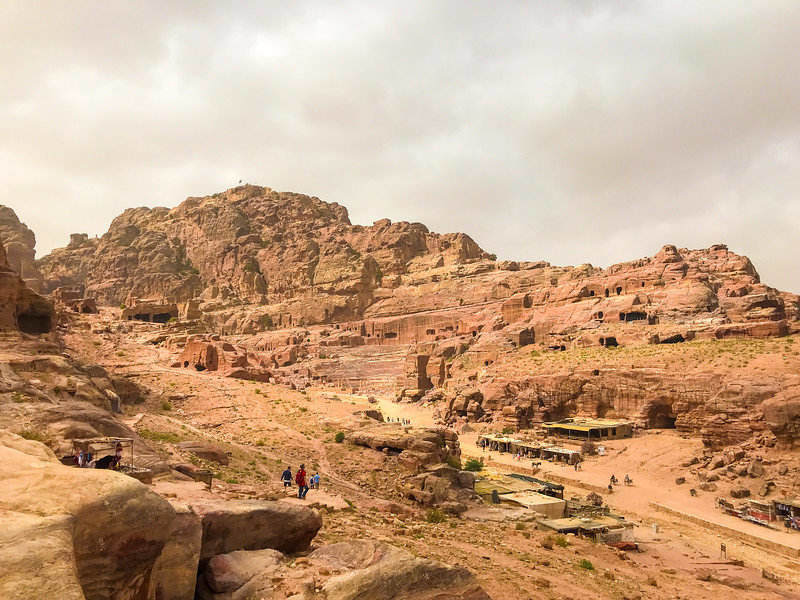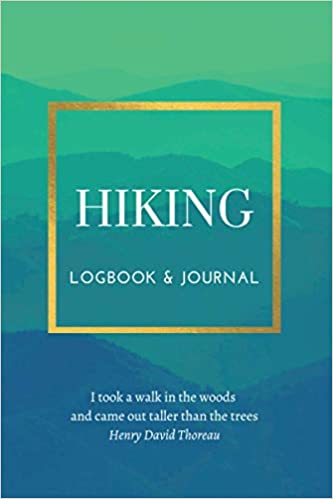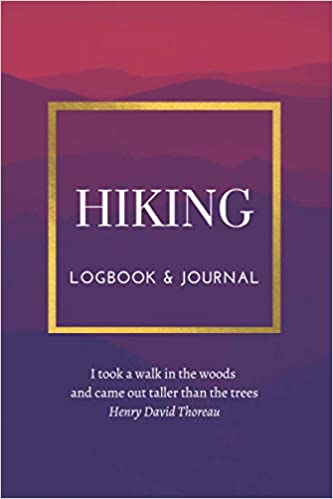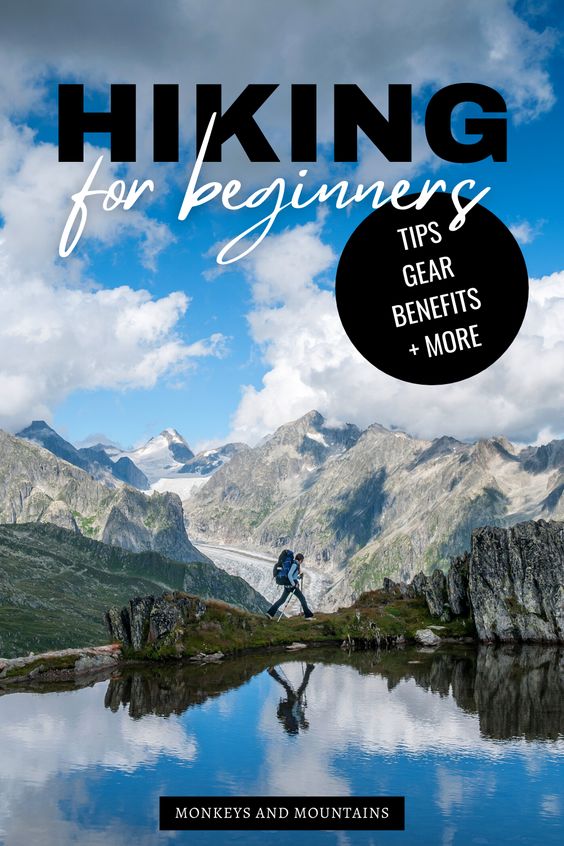This hiking for beginners’ ultimate guide gives you an overview of how to start hiking so that you can hit the trails with confidence and have a great day in the mountains.
Table of Contents
You may find yourself scratching your head asking:
- How do you find a beginner hiking trail for your first hike? Or shorter hikes that still offer incredible views?
- What hiking gear do you really need when you’re a beginner? And that’s not going to cost a fortune?
- None of my friends are interested in going. How do I find a hiking buddy?
- How do I find my first hike suitable for my fitness level if I’m out of shape?
- I’m afraid of encountering a bear or other wild animal on the trail? How do I avoid this?
- What do I do when I get tired and don’t have the endurance to keep going?
That’s why I created this beginner hiking essentials guide. I answer your most commonly asked questions because I want you to start hiking and get YOU out on the trail. Hiking has changed my life.
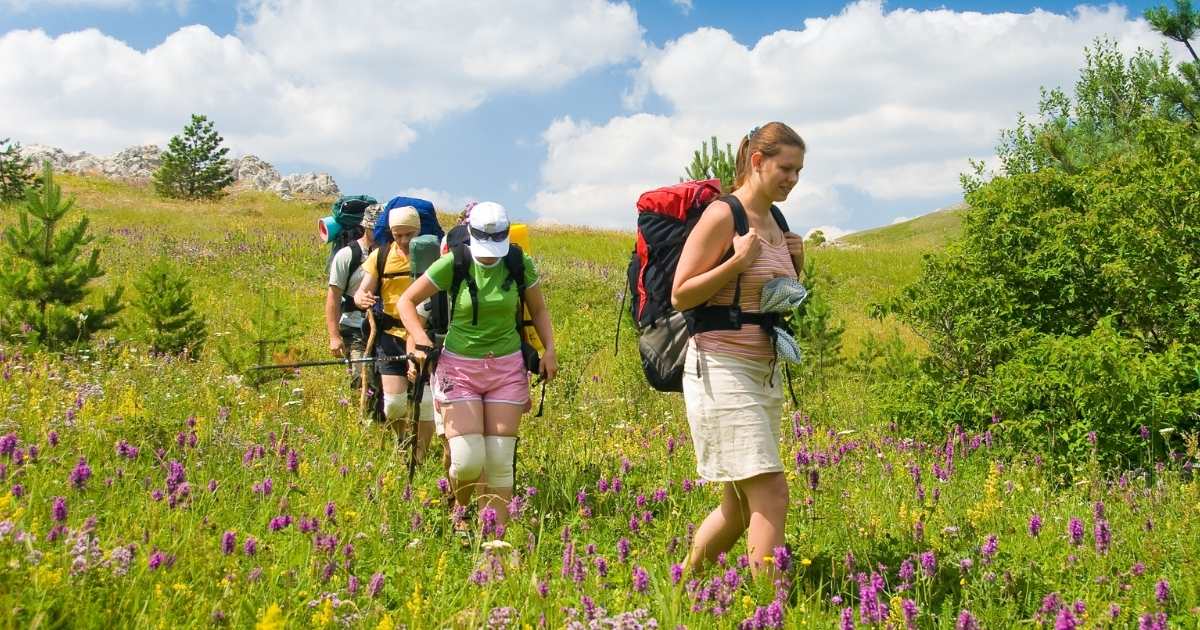
This essential hiking for beginners guide will help you start hiking.
If you want more in-depth information, check out my new online course, How to Start Hiking and Feel Amazing From Your First Hike.
In this course, I share my exact process for finding easy hikes, no matter what your skill level, my fool-proof method for not getting lost, and so much more. Check it out.
- Ready to get started? Let’s hit the trails!
What Are the Benefits of Hiking? I.e Why Should I Start Hiking?

Hiking is a great physical exercise that improves your cardio fitness, strengthens your heart and builds strong muscles and bones.
However, I think one of the often-overlooked benefits of hiking is what it does for your mental health. See: How Hiking Can Help You Realize What You’re Thinking.
Hiking improves your mood. Just 90 minutes of walking in nature can lead to a lower risk of depression, according to a Stanford-led study.
In Scotland, doctors are prescribing nature – literally. The prescription is expected to improve the patient’s happiness, blood pressure and reduce the risk of heart disease and stroke.
The combination of physical activity and nature is a powerful concoction that will make you feel oh SOOOO good.
Plus, I get all my best business ideas when hiking. On my last hike, I got three alone!
How’s that for motivation to get out and start hiking?
Related Reading: Best Hiking Underwear: Top Picks for Wool, Moisture-Wicking and Antichafing
WHAT TO DO BEFORE YOU START HIKING
Time of Year and Weather Conditions
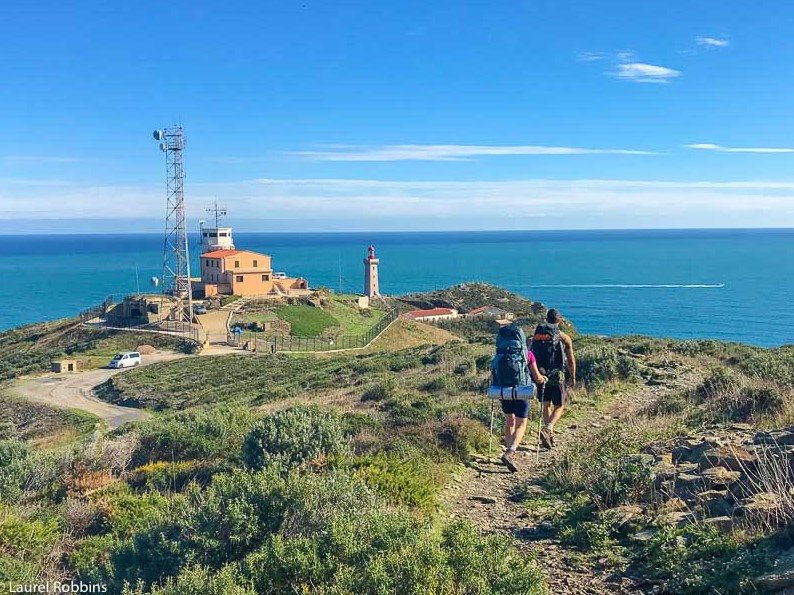
You can hike any time of the year. I personally LOVE winter hikes, but you’ll need to take more precautions when hiking in cold weather so it’s a good idea to get a few hikes in warmer weather under your belt first. Check out my guide to winter hiking gear to learn more.
However, as most beginner hikers are interested in heading out when the weather warms up, we’ll focus on that.
- Check the weather forecast both in advance and again in the morning before your start your hike. It may be different than your current city. Many mountain ranges have microclimates. That means the weather can vary dramatically even when it’s not far from another place. Plus, mountain weather in general changes very quickly.
- If you’re hiking in spring or fall in an area that gets snow, be aware that there could still be lingering snow, especially at higher elevations.
- Even if the weather outlook looks great, it can change quickly in the mountains. Always bring extra layers in case the weather turns cold.
I personally hike year-round and love doing the same mountains in summer and winter to see how different they look.
Related Reading: Day Hiking Packing List: The Essentials to Bring on Every Hike
How to Find the Best Places to Hike
One of the best ways to find hiking trails is to crowdsource from other hikers. Ask your friends and family if they can recommend a beginner hike. There are also Facebook groups, like our Hiking In Europe Facebook Group, alpine associations, local hiking groups and apps.
Check out our post How to Find the Best Places to Hike for specific recommendations.
Related Reading: 7 Fun Facts About the Balkan Mountains
How to Find Beginner Hikes

The main things you’ll want to consider when looking for an easy hike are:
- Trail Popularity: When you’re just starting to hike, I recommend choosing a popular hiking trail. If you run into any trouble, there will likely be other hikers who can assist.
Note: this doesn’t mean that you shouldn’t be prepared. It’s essential that you are – even if you’re a new hiker. But being on a popular trail can offer peace of mind until you’re a more experienced hiker.
- Trail Length: Choose a trail that’s a distance of ~10km (~6 miles) or less for your first hike. You can gradually build up as you’ve done a few hikes and work your way up to more challenging hikes if you choose. But start with a shorter distance to keep it fun and to test your endurance.
- Trail Markings: Choose a hiking trail that’s well-signed and where it’s easy to find the path. Look for trail descriptions that specifically mention that it’s easy to find your way.
If the description says it’s unmarked or to “look for a pile of rocks, then turn left,” you’ll want to save these trails until you’re more experienced in route-finding.
- Elevation Difference: This is the difference in elevation from the start of your hike to the highest point, usually a peak if you’re hiking a mountain.
If you’re in reasonable shape, look for a trail with an elevation gain of ~ 300 m (~984 ft). It’s enough to get your heart rate up without being too much when you first start hiking.
If your fitness level is quite low, no worries. Just choose a trail with less elevation difference. Depending on how easy or difficult you find it, you can gradually build up.
You want to enjoy it, so you’ll want to do it again. Therefore I recommend erring on the safe side by choosing a trail that’s too easy instead of too difficult, where you’ll be miserable. If you have a fun day in the mountains, you’ll be more likely to make hiking a regular occurrence.
- Elevation Profile: As a beginner hiker, you’ll want to choose a trail that has a gradual incline versus one with a steep incline.
For example, the two hikes below are similar in terms of total elevation gain. However, I’d recommend the first one marked in red for beginner hikers since the elevation is more gradual.
If you were going to do the second one in blue, I’d recommend doing it in reverse so that the elevation gain is more gradual. That way, you avoid the steep incline, which requires a lot of endurance. I’ve done it the first way, and it’s steep even for an experienced hiker.
Note: these are elevation profiles from two hikes that I’ve done. I’ve taken many first-time hikers on the first one (Chester Lake in Kananaskis Country in the Canadian Rockies) and they’ve all done fine with it.
Knowing how to choose the right trail for you is one of the biggest new hikers face.
I cover this much more extensively in my How to Start Hiking and Feel Amazing from Your First Hike Online Course that I created.
I also show you actual examples of how I find and evaluate hikes. I also teach you my 5-step method to determine if they’re appropriate for new hikers. It’s a comprehensive hiking guide that new hikers will find incredibly useful.
Recommended Reading: Best Walking Holidays in Italy
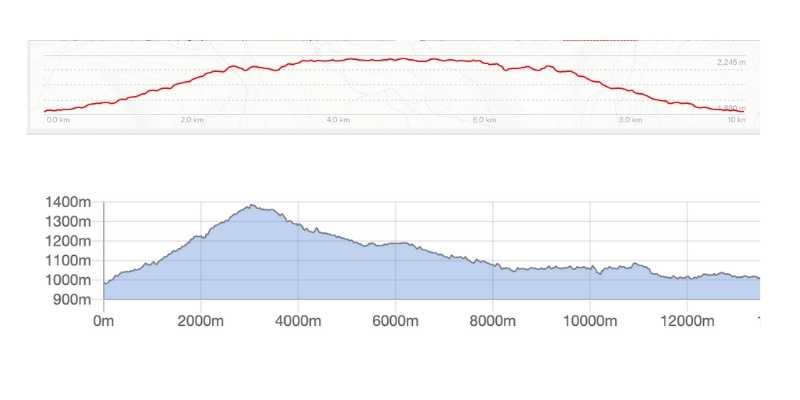
Recommended Reading: Tour du Mont Blanc: The Best Way to Plan Your Epic Trek!
Hiking with a Buddy versus Solo Hiking
I always recommend that beginner hikers go with at least one hiking buddy and not alone. The exception to this is if it’s a really easy popular hike where you know there will be a lot of other hikers.
I love solo hiking. – It’s great for clearing your mind and seeing what you’re really thinking. See How Changing Your Thoughts Will Make You Happier + a Technique to Try While Hiking. However, it’s a good idea to do a few hikes first before heading out by yourself.
If you don’t have anyone to hike with, join a hiking group or an alpine club. Once you’ve been a few times and meet new people, you can break off and organize your own hikes with a few of your new hiking buddies.
Some people prefer going with just one hiking buddy. Others prefer the social aspect and enjoy hiking in groups. It depends on your personal preferences. There’s no right or wrong.
Note: The exception to this is when there are warnings due to bears (usually in fall in some areas, like around Lake Louise in the Canadian Rockies), where it’s mandatory to hike in a group of at least six.
If you have a friend or partner who’s not interested in hiking, check out 6 Creative Ways to Convince Your Partner to Take a Hiking Holiday. It’s intended for multi-day trips, but many of the tips also apply to day hikes.
Recommended Reading: Average Hiking Speed: Why it’s Important and How to Calculate it
Navigating – I.e. How to Not Get Lost When Hiking
Once you’ve chosen your hike, I recommend bringing the following:
- GPS route of your trail. Pre-download it into an app like Gaia (which I personally use) on your mobile phone or find a trail in an app like FatMap (my new favourite).
Always do this at home since cell reception may/may not be ideal at the trailhead. In addition, some apps like FatMap or Wikiloc require an internet connection unless you’re using the paid version. See this article for various hiking apps that you may find useful. - A written description of your hike. This can be a hiking guidebook or a printout from a route you found online. It contains valuable information about the trail you can’t get from GPS or a paper map.
- Printed map. Ideally, you’ll want a detailed topographical trail map, like this one of the Great Smoky Mountains (which you can reuse when hiking in the same area). But if you don’t have this, then at least a printed map from the trail description. This might seem like overkill, but it’s a backup and important, especially when you just start hiking.
Your GPS map might not work (or freeze), your cell phone battery dies, or something happens to your phone.
Or you may need to find an alternative route for some reason – like you run into a bear or you decide you don’t want to do the entire hike and want to see how best to shorten it.
It’s always good to have a backup(s). Doing so will help you avoid an emergency situation. You may not need it, but you’ll be thankful for the times that you do need it.
Recommended Reading: 18 Best Hiking Leggings to Keep you Comfortable on Your Hike
Average Pace: How Long Will My Hike Take?
In trail descriptions, you’ll see the estimated time a hike will take. However, when you’re a beginner hiker, allow for extra time. Also, note that the indicated time doesn’t include breaks. You’ll want to allow time for these as well since all those 5-minute rest stops add up.
Naismith’s rule is a good one to follow. It states that on a flat surface, you can hike 5 km (3 miles) per hour. Add an additional hour for every 600 m(2000 ft) of ascent.
So a 10 km flat hike would take you around 2 hours (not including breaks), while a 10 km one with 600 m of ascent would take you 3 hours.
You may find that it will take you longer when you first start hiking until you become used to the ascents. I cover this in more detail in my comprehensive How to Start Hiking and Feel Amazing From Your First Hike Online Course.
Hiking Gear: What Do I Need to Bring?
Check out our post on hiking gear for a day hike and for specific gear recommendations; see our Best Hiking Backpacks for Every Budget and check out our Hiking Gear page for further recommendations, including socks. They’re an overlooked item in my opinion, but are critical for preventing painful blisters!
Also, check out my FREE How to Choose the Right Day Hiking Gear Online Course. It shows you specific examples of what features to look for when it comes to gear for beginners, as well as what items you should invest in and what items you can skimp on, saving you hundreds of dollars!
And, best of all, it shows how you can get started without buying new equipment.
But I’ll give you a tip, when you just start hiking and aren’t sure if you’ll like it, and are planning to do an easy trail, you don’t need expensive hiking boots or hiking shoes.
Trail runners or even regular running shoes are fine. As you progress to more challenging hikes, you’ll definitely want to invest in a good pair of hiking boots, but it’s not necessary when you first start hiking.
Also, if you’re hiking in an area where hunting is also allowed, wear bright clothing to make it easier for a hunter to spot you.
9 Hiking Safety Tips
I mentioned the importance of checking the weather forecast but in addition, you can prevent an emergency situation with these 4 tips:
- Bring an Emergency Thermal Blanket, even if you’re hiking in summer. If you get stuck on the mountain overnight for some reason, an emergency blanket helps prevent you from getting hypothermia. Mountains get cold at night.
- Bring bear spray if you’re hiking in an area that has bears.
- Check with the state/provincial/national park site for current trail conditions and wildlife in the area. They’ll also be able to provide tips for preventing encounters and) what to do if you do encounter a wild animal.
Also, ask them if there are any emergency shelters and where they’re located. This last tip likely isn’t needed for easy hikes but is a good habit to get into when you do longer hikes. - Let someone know the name of the trail, who you’re hiking with and when you expect to be back. Then, check in with them and let them know you’ve arrived safely back at home.
- Always bring a first aid kit, and Take Care of Blisters Right Away. If you feel like you’re getting a blister, look at it right away, don’t wait until it becomes unbearable. Cover it with a Compeed Blister Cushionwhich will help take the friction off. You want to do this at the first sign of a blister.
You can avoid blisters in the first place by wearing the right hiking socks. That’s one thing I don’t cheap out on. Moisture-wicking socks go a long way in preventing blisters. - Keep an eye on the weather: It can change quickly in the mountains. You don’t want to find yourself on a peak in a thunder and lightning storm. If the clouds are starting to roll in and you haven’t reached the peak yet, consider turning around.
- Avoiding Ticks: If you’re hiking in an area where you know there will be ticks, wear long clothing, including hiking pants, instead of shorts if you’re hiking in grass tuck your pants into your socks to further avoid ticks or wear gaiters.
You can also wear light colour clothing, which will make these critters easier to spot. Finally, do a tick check after your hike and get someone to check your hair. See Tick Checking 101 for further information. - Avoiding Bears: The best way to avoid bears is to make noise so that you don’t surprise them. Simply talking, singing, and yelling “Hey Bear” every once in a while will do the trick.
Wearing bear bells isn’t necessary. Stay calm and avoid direct eye contact while not taking your eye off the bear. You can find more tips here.
I’ve seen bears, both black and grizzly, while hiking at least 30 times and have never encountered an aggressive bear. I also used to collect grizzly bear hair as a volunteer for a research project tracking grizzly bears’ habitat usage in Banff National Park in Canada. - Always bring extra water. See below for how much.
How Much Water Should I Bring?

Everyone is different but generally speaking, you should aim to drink ~ 1 litre (~1 quart) of water for every two hours of hiking. Plan to bring extra water in case your hike takes longer than expected or you get lost.
For example, for a 3-hour hike, you should bring 1.5 litres of water. However, I’d recommend bringing at least 2 litres, and even 2.5 litres if it’s hot out, to be on the safe side.
Check out Everything You Need to Know About Water When Hiking for further info. It’s always a good idea to have plenty of water, especially when you first start hiking and don’t know how much water you’ll drink.
It may be tempting to drink from natural water sources but don’t unless you have a water filter. The water may contain bacteria that will make you sick. That’s true, even if it’s running water, like a river.
How to Start Hiking
EARLY BIRD PRICE
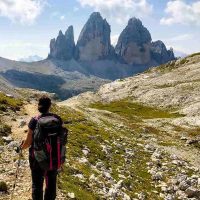
And Feel Amazing From Your First Hike
Getting in Shape When You Start Hiking
There are lots of ways to get in shape for hiking, but I’ve found High-Intensity Interval Training (HIIT) to be one of the most effective and fastest. You get a great cardio workout while strengthening your muscles at the same time.
Depending on your fitness level, you can choose either low or high impact. Both provide a fantastic workout in as little as 10 minutes. You can either go to a class or search for videos on YouTube for a home workout.
I find consistency is more important than duration. I.e. if I do 15 minutes a day 5x a week, I get better results than if I do a 1-hour class once a week.
And of course, regular hiking and working up towards longer and more challenging hikes. But be sure to go at your own pace when you start hiking. It’s supposed to be fun, so don’t overdo it.
DURING YOUR HIKE
What to Eat When Hiking
Look for nutrient-dense foods that provide lasting energy and are rich in complex carbohydrates, protein and healthy fats. These types of food will be digested more slowly and provide you with a steady supply of energy.
For a day hike, you can bring fresh fruit, trail mix, and a sandwich on whole-wheat bread with peanut butter and some cheese. My personal favourite hiking lunch/snacks are olives for their healthy fat, fresh blueberries, cheese, trail mix and a pepperoni stick.
If you choose an energy/protein or granola bar, look for one that has as few ingredients as possible. You want to ensure you’re not getting added sugar or other ingredients that will be hard for your body to process.
Experiment with what feels good for you when you start hiking. Everybody is different.
Always carry out your food waste when hiking. Never litter (even if it’s biodegradable).
What Happens When the Hike Becomes Too Hard?
First of all, take a deep breath. You’re stronger than you think. Turning around is always an option, but first stop, take a break. If you feel up to it, continue, but hike slowly. It’s much easier to hike at a slow and steady pace than it is to go fast and then need to take a break every few minutes.
I frequently get passed by hikers at the start of a trail. Fast forward an hour or so later, and I’m the one passing them. I feel them feeling great while they’re exhausted, having used up all their energy. Slow and steady wins the race – or in this case, gets you to the peak. This is one of the most common mistakes I see people make when they start hiking.
It’s not a race. Hike at a pace that feels good to you.
How to Start Hiking
EARLY BIRD PRICE

And Feel Amazing From Your First Hike
Hiking Trail Etiquette
- Follow the Leave No Trace Principles, which help minimize your impact on the environment when spending time in nature. Further info here.
Of utmost importance is don’t do your business on the trail. Do it at least 70 m (200ft) from the trail. If you use toilet paper, you should carry it out with you so be sure to bring a ziplock bag with you.
If there’s solid waste, dig a small hole and cover it up. Yes, it’s a pain, so try to do your business beforehand.
Peeing is much less of a problem. If you don’t want to carry your toilet paper out, then consider drip-drying – yes, ladies, that applies to you too :).
2) Right of Way on the Trail
If you come across another hiker(s), the person going up has the right away.
If you come across horses, they have the right away. Be sure to give them enough space.
Hikers have the right away over mountain bikers, but for your own safety, I recommend giving them a lot of space since they may be coming down fast.
AFTER YOUR HIKE
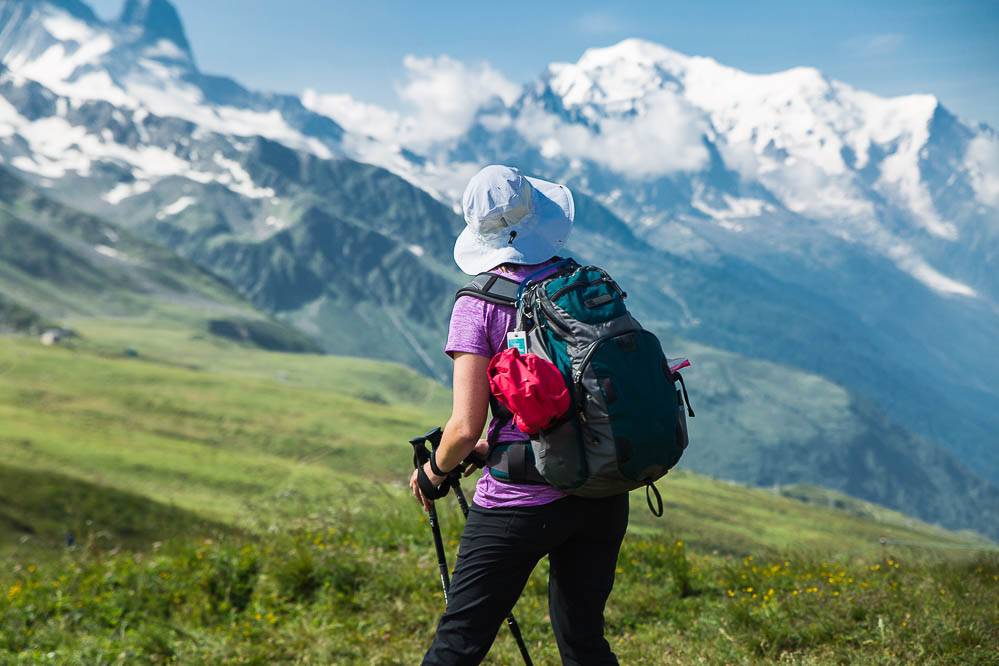
Do these five things after your hike:
- Let the person you told before you left know that you’ve arrived back safely.
- Record your hike in your hiking logbook. This is a great way to remember the trails you’ve done and track your progress. When you start hiking, it’s especially rewarding to see how quickly you progress. Find out why I else I recommend keeping a hiking logbook. I’ve created three that you can find on Amazon – see below.
- Follow our suggestions to reduce muscle soreness after your hike. It even includes a few suggested 5-minute stretching and yoga videos on YouTube. Perfect if you’re new to hiking or an experienced hiker.
- Consider buying either a foam roller or leg massager. They feel SO good after a long hike and really help your recover, especially when you first start hiking.
Note: if your muscles are sore, I’ll be honest; you’ll have a love/hate relationship with your foam roller. However, the pain is worth it afterwards. I use my foam roller several times a week and my ExoGun massager once a week. - Start planning your next hike and put it in your calendar. Despite working long hours, I get out every week. I make time for it and protect that time since it’s on my calendar. It’s highly addictive – in the best way possible. And it’s a great way to make it a habit when you first start hiking.
Document your hike in one of my hiking logbooks. It’s a great way to see your progress when you start hiking.
NEXT STEPS
Now you know the essentials of hiking and are ready for a great day in the mountains. But there’s so much more to learn when you start hiking.
Want to find out more? Check out my How to Start HIking and Feel Amazing From Your First Hike Online Course, which is much more comprehensive. Hiking has changed my life and I know that it can change yours as well.
In my online hiking course, I go into more detail and provide specific examples of how to find the right hike for you and handy checklists.
You can also sign up for my FREE How to Choose the Right Day Hiking Gear Online Course in which you’ll learn specific features to look for in backpacks and my #1 tip when it comes to buying hiking boots. It alone will save you hundreds of dollars.
But most importantly, I don’t want you to miss out on the joy that hiking brings just because you think you’re not fit enough or you’re too slow to keep up with your friends. Don’t worry; I cover that too! Almost anyone can start hiking, even if you’re not in great shape.
Hiking has brought me tremendous joy and insights, and I know it can do the same for you. Now is the time to start hiking – not when you lose 10 lbs or the kids leave the house. You’ve got this – and the joy waiting for you at the top of the mountain :).
I created this hiking for beginners guide to cover the essentials because I know it’s confusing when you first start hiking. If you found it useful, please share it so that we can more people out on the trails. Happy Hiking!
How to Start Hiking
EARLY BIRD PRICE

And Feel Amazing From Your First Hike
